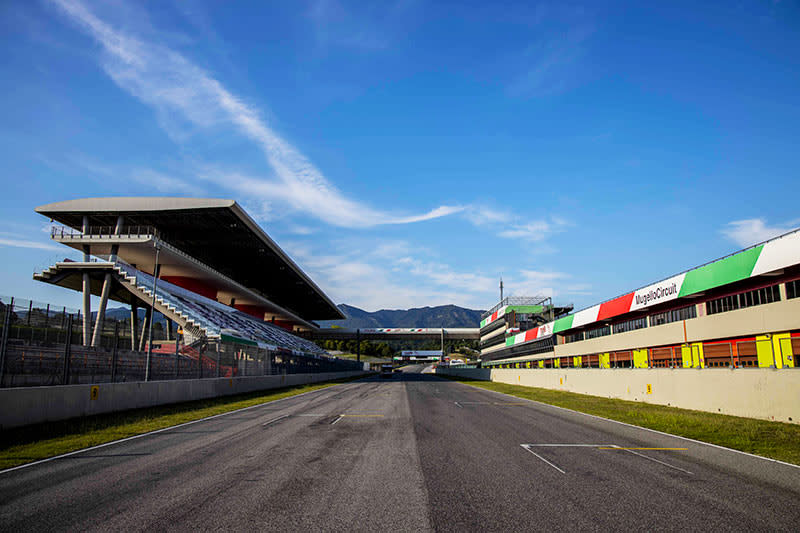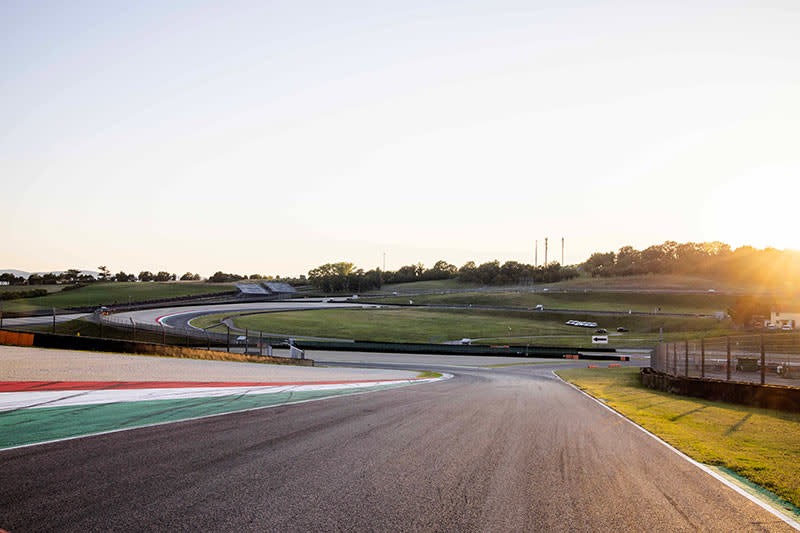Paolo Poli, General Manager and CEO of the Mugello Circuit
On the occasion of the return of MotoGP at Mugello, we bring you our latest interview with a key voice
It is one of the world’s most beautiful racing circuits, as it seems naturally built into the sweet hills of the Mugello countryside. A historic event and a great goal for what is known as the land of car racing. Behind this great success, in addition to the Circuit’s whole team and public institutions, is Paolo Poli, the point man for Ferrari, which owns the circuit, and general manager and MD of the Mugello circuit since 2009. Under his guide, the racing circuit based in Scarperia, just 30 kilometers from Florence, has been completely renovated and equipped with the best infrastructure on the market, thus, allowing it to jump into the Formula One league.
 Paolo Poli
Paolo PoliFrom the first auto racing event in 1914 and the construction of the circuit in the seventies to the present day. Could you please tell us the story of this circuit through its key figures?
First of all, you need to understand why, in the early 1900s, Florence’s Automobile Club reached this decision: the goal was to organize a selective race that would exceed in difficulty the Consuma Cup which had been held since 1904. And so, the race track was designed to be challenging, running through hills, climbs, sharp U-bends, in order to make the drivers race without catching their breath. This is the setting where one of the world’s greatest car races, which would go down in the history of auto racing, was born. In short, from then on, the Mugello’s fortunes were tied to speed. After a break due to World War One, the Mugello Circuit became the battleground for epic challenges between the most popular racing drivers of the time: in the 1920s, from Campari to Maserati, Enzo Ferrari, Brilli-Peri, Biondetti. And then, in the only race held in the 1950s, in 1955, Cabianca, Maglioli, Valenzano, Musso and Maria Teresa de Filippis, the first female driver to compete in a Formula 1 Grand Prix race. In the last seven races (1964-1970), the best in terms of performance and audience, Scarfiotti, Vaccarella, Giunti, Siffert, Merzario, Vaccarella, Nanni Galli. In 1974, with the opening in Scarperia of the permanent circuit and the introduction of the two and four-wheel international competitions, a new chapter of the circuit’s success story begins including, in 1988, a turning point with Ferrari purchasing the race track. Extensive renovation works, another inauguration ceremony in 1991 and, from then on, an ongoing upgrading process.
 Mugello Circuit (ph. Dario Garofalo)
Mugello Circuit (ph. Dario Garofalo)The Mugello Circuit has been the world’s most famous Moto GP race track for years, as well as a favorite with racing drivers and professionals. What do you take the most satisfaction in, as you see it become the most spectacular stage for F1 GP races?
The F1 is the Mount Olympus of motorsports and hosting and organizing a race represents a huge opportunity as well as a great challenge.
Built in 1974, the Scarperia circuit is known for its sharp U-bends and its 50-meter elevation changes. Please take us on a tour of its most spectacular and challenging sections, which the F1 drivers have to face during the race.
The Mugello Circuit is a technical, highly challenging race track, unique of its kind because no changes have been ever made to the track’s layout. One of the toughest parts is the first bend after the main straight, San Donato, but the Circuit’s essence is represented by the Casanova-Savelli and the two Arrabbiate turns, which the drivers themselves describe as the masterwork of car racing circuits.
 Mugello Circuit (ph. Dario Garofalo)
Mugello Circuit (ph. Dario Garofalo)September 13 is also the occasion to celebrate Ferrari’s one thousandth GP race. What anecdote best describes the bond between the Mugello Circuit and Ferrari?
I believe that we should tell about the people who played a major role in this phase, rather than anecdotes. And the figure who best represents the link between these two stages of the circuit’s history is Remo Cattini. Remo Cattini arrived in the Mugello area in the mid-seventies, when ACI Firenze entrusted him with the task of inaugurating- and mostly managing- the permanent circuit which was under construction in Scarperia. When Ferrari took over the Circuit, Cattini was hired as consultant and worked there until 1995. His experience and professional skills made him a reference point for a lot of people in the world of Italian and international motorsports, who were fortunate enough to cross his path. Such as Ferrari’s former Team Principal, Stefano Domenicali who, in the early 1990s, became the Mugello Circuit’s International Race Director. Remo is the person who supported me more than anyone else, who advised me when I was barely twenty years old and I was in the earliest stages of my career at the Circuit for Ferrari. His presence has been essential to the Circuit’s development.
The Gran Premio della Toscana race is going to be the chance for a lot of people to get to know this beautiful land. Please share your view of Mugello.
The Mugello area is a gem set in a region rich in history, art and culture and the Circuit is a Ferrari-owned gem. I hope that this land, where I was born and I work, will become, thanks to the visibility given by the F1 GP race, one of the world’s most coveted destinations in the near future. We have all the important keys to success. Being near Florence and an integral part of Tuscany represents a great added value for this area and the Grand Prix race might be a turning point.









